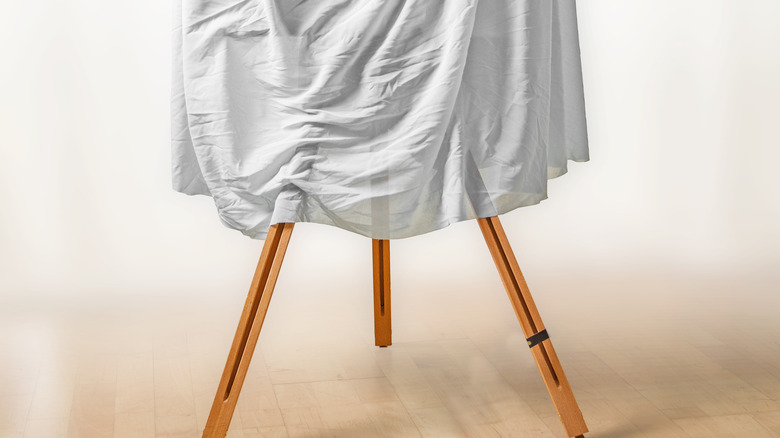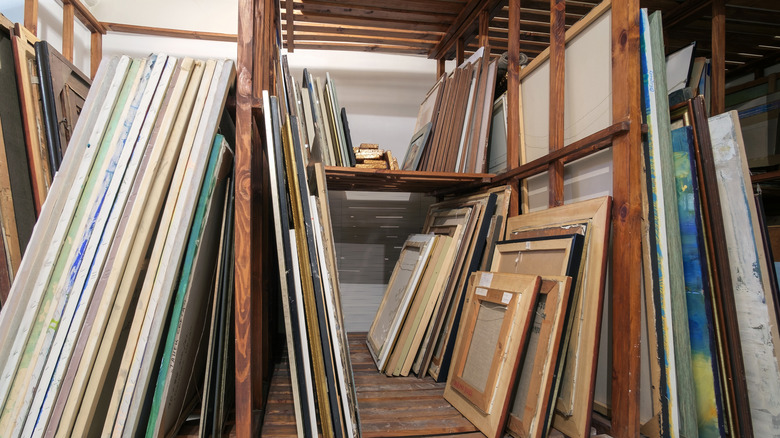The Best Way To Store Your Artwork
Your artwork, whether it is a creation of your own making or a priceless piece, is important. Keeping these possessions safe is imperative, especially if you want them to last the test of time. Knowing how to store artwork will ensure it stays looking good when it isn't being displayed and will allow you to enjoy it for many years. Canvas-based paintings come in all shapes and sizes, and the mediums used on them range from oil to watercolor. The base itself can be fragile and should be handled with the utmost care. While canvas might feel sturdy, it can easily rip or tear and succumb to scuffs, marks, or dirt.
Whether you're moving or just shuffling items around your home, there are a few things to consider when storing artwork. Pay attention to everything from the temperature and atmosphere to surrounding items. According to Artwork Archive, it can even be detrimental to a piece if it spends too much time on display, and alternating it out will help avoid everything from cracks to fading. If you want to make sure your beloved pieces stay just as fresh as the day you made or purchased them, this tip will help protect them from daily wear and tear as well as long-term storage.
Find a suitable environment
The biggest factor for properly storing your artwork is finding the right environment. Damp, humid, or excessively hot areas are dangerous for paintings and can ruin them if you're not careful. Likewise, avoid keeping your pieces in the attic or basement of your home, as these spots can suffer from moist conditions, bugs, and even excessive dust. Instead, the best places to store them are in a room where you can control the climate, like a bedroom or even an office, according to LifeStorageBlog. These spaces will preserve rather than deteriorate items, keeping them from cracking or exposure to moisture.
Your pieces are best stored upright and vertically. There should always be something to protect them against bumps, scrapes, and scuffs, and cloth is the best option because it will keep detrimental elements out without clinging to the paint. Try to find a strip of fabric that can encompass the whole canvas, as this will help keep out dust and dirt. The fabric can be thin, as anything too heavy could sit against thicker paint mediums and wear it down over time. Once you've wrapped your paintings, set them up against a wall or solid surface where they won't be in danger of getting knocked or bumped.
Try a mirror box
If you're still nervous about protecting your paintings and don't feel like vertical, cloth-covered storage is enough, you can invest in mirror boxes. These slim units are great for fitting canvases in and ensure they are safe from scratches, pests, and dirt. These cardboard boxes should still be kept in a climate-controlled room or space, as the material is susceptible to damp conditions and rodent infestations. Mice like to use cardboard for nests, so checking for pests ahead of time is integral. Renting a climate-controlled storage unit can also be helpful if you don't have room in your home to keep unused paintings.
In order to keep the canvas from shifting while inside the mirror box, Uhaul recommends adding spare paper pieces that have been scrunched up to the interior of the vessel. This will keep everything from moving around, especially if the canvas is smaller than the box itself. First, however, make sure the painting or artwork is covered with a protective film that won't stick to the watercolor or oils. Bubblewrap or packing paper is good and will keep dust or dirt off as well.


